Sustainable energy is a form of energy that meets our today’s demand for energy without putting them in danger of getting depleted or exhausted. According to the East African energy research, sources of sustainable energy include solar, wind, hydropower, geothermal, and biomass energy. The Sustainable Development Goals (SDG) are a collection of seventeen global goals designed to be a blueprint to achieve a better and more sustainable future for all. This article will focus on goal 7, that’s Affordable and Clean Energy.
In the East Africa region, we have a variety of clean energy sources including solar, wind, geothermal, biomass, and hydro energy. Solar energy is an ideal alternative source of energy because of its potential in the region since most countries experience sun all year round. Hydropower is also an important renewable source because it plays an important role in the region’s energy system and development.
According to one of the experiments conducted by Energy Engineering students at Makerere University, Biomass contribute to about 90% of the total energy consumed in most of the East African countries. It provides almost all the energy used to meet basic energy needs for cooking and water heating in rural and most urban households, institutions, and commercial entities. Biomass is also the main source of energy for most rural industries.
However, wind energy is not exploited that much in most East African countries. The reasons for this range from site selection dynamics in some countries like Kenya, to inadequate resource information in other countries. Nuclear energy is usually considered as a non-renewable energy source. Although nuclear energy itself is a renewable energy source, the material used in nuclear power plants is not.
Nuclear energy is not fully developed in the region due to the dangers associated with harnessing it. These dangers include operational risks and the associated safety concerns, uranium mining risks, financial and regulatory risks, unresolved waste management issues, nuclear weapons proliferation concerns, and adverse public opinion.
Here in Kenya, we have various wind farms including Ng’ong, Wajir, and Turkana. Geothermal power plants also exist, from Olkaria 1 to Olkaria 4, together with many other private sectors having private geothermal power plants that still contribute to the national grid. There are also several solar companies offering employment opportunities to many people within the region since we receive sunlight throughout the year.
My rural community is a practical example with a solar energy company known as Sunking Solar Company, which supplies solar panels together with other electronic devices like televisions, radios, Mobile phone chargers, electric bulbs, and electric torches. The common citizen with low income really finds it hard to walk into an electronic shop to buy all of these items at once hence the company helps people in the rural areas by selling these items to them on hire purchase terms, which is more affordable to those in the rural areas. From the little earnings they make, they are then able to provide for their daily basic needs and also pay the company. This has greatly reduced the use of non-renewable sources of energy like kerosene and others.
Read – The Future is Possible – An Article by Chipo Chama, Zambia
There are currently several companies fighting for the reduction of the use of non-renewables. They include BBox Kenya, DLight solar, Solar Panda, and Solar Mwezi, among others. From a personal experience, one of the greatest challenges I ever faced was during my primary school education, when I had to study at night using a small kerosene lamp which was never reliable. The lamp eventually worsened my eyesight forcing me to get a pair of spectacles. I believe several students improved their grades since they use solar lighting which is reliable and also good for their eyesight.
Currently, I have friends who are employed by these different solar companies to market their products to the local people. They walk from door to door educating the locals on the importance of using clean and sustainable energy like solar energy.
Clean energy has immensely improved living standards in the local communities. The data collected from KenGen overproduction and Kenya Power over consumption shows that a bigger percentage of Kenyans (almost 60%) are using renewable sources of energy. Another impact it has had is that since solar panels need humans to install them and wind farms need technicians for maintenance, it means on average, more jobs will be created for each unit of electricity generated from renewable sources than from fossil fuels. In addition to the jobs directly created in the renewable energy industry, growth in clean energy can create positive economic ripple effects. For example, industries in the renewable energy supply chain will benefit and unrelated local businesses will also benefit from increased household and business incomes. Local governments also benefit from clean energy most often in the form of property and income taxes and other payments from renewable energy project owners. Owners of lands on which wind projects are built often receive lease payments as well as payments for power line easements and road rights of way. Renewable energy is providing affordable electricity across the regions now and will help stabilize energy prices in the future. Although renewable facilities require upfront investments to build, they can operate at a very low cost, and as a result, renewable energy prices can be very stable over time.
Kenya and most of the countries in the African continent are third world countries. With the current trends in technology, I’m convinced that with time they’ll develop some more and adopt clean energy technologies. Once the government decides to subsidize these projects, we shall not only go far as a region but also as a continent. Kenya being in the region shall realize its dream of vision 2030 about being the most industrialized country in Africa.
In order for our region to achieve Goal 7 of the SDGs and become competitive, we need to invest more in solar, wind, and thermal power, improve energy productivity and ensure energy for all. The government needs to wake up in terms of expanding infrastructure and upgrading technology to provide clean and more efficient energy which will encourage growth and help the environment. The region needs to support policies and programs on technology development and transfer in the area of renewable energy, especially building on international discussions on technology transfer and climate change, low carbon, high growth, and development options. We may also want to harness biogas as the region has many domestic animals such as cattle, goats, horses, etc. The governments should subsidize energy-related courses in our higher learning institutions as well for students to enrol for such courses so that we may have more experts in the field.







